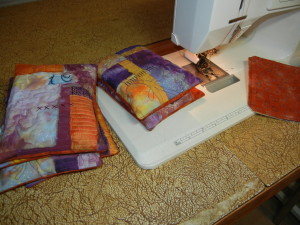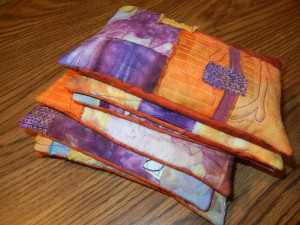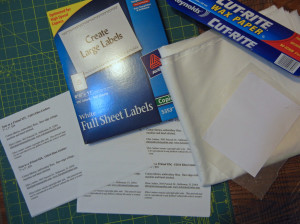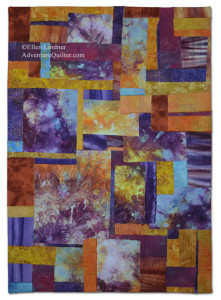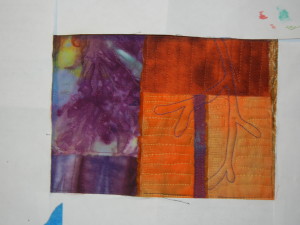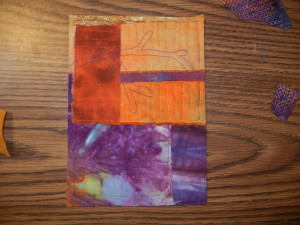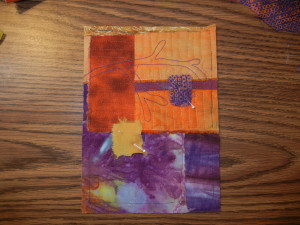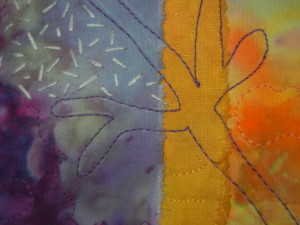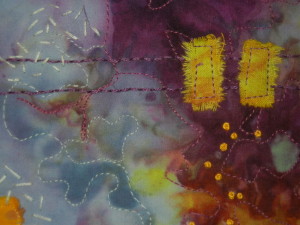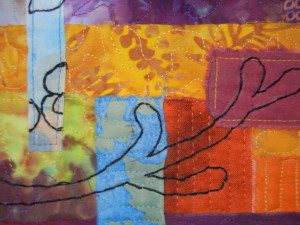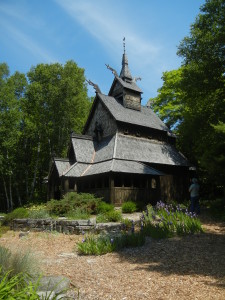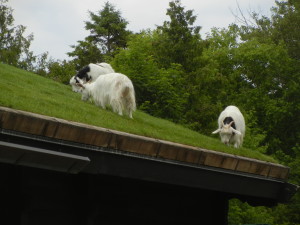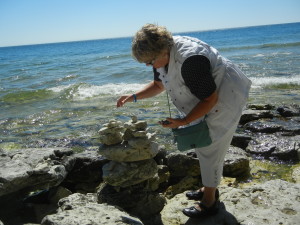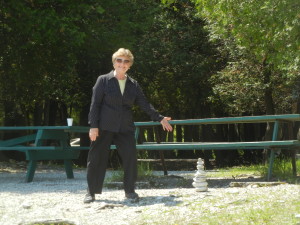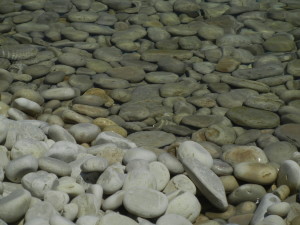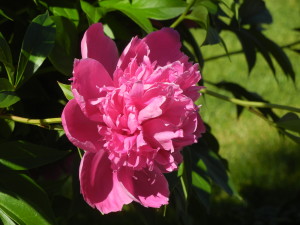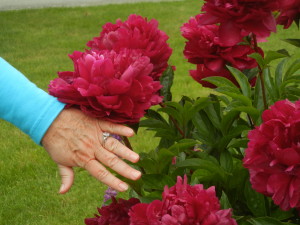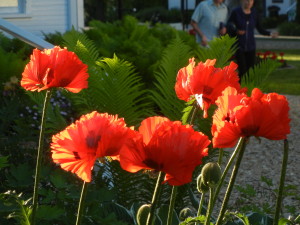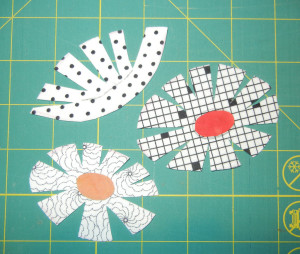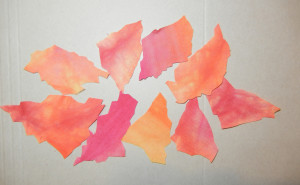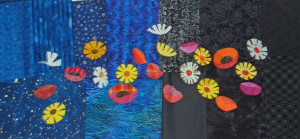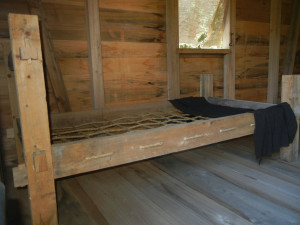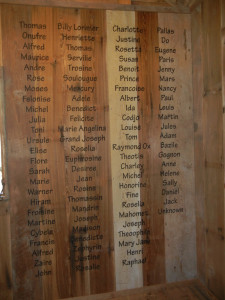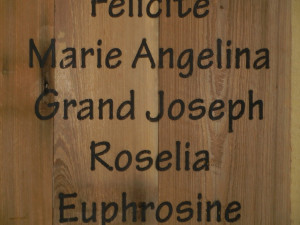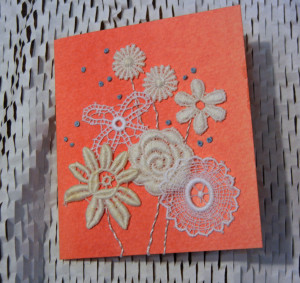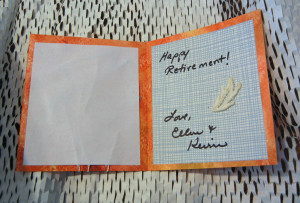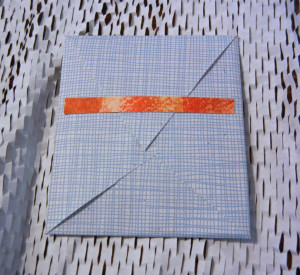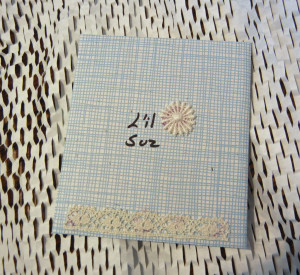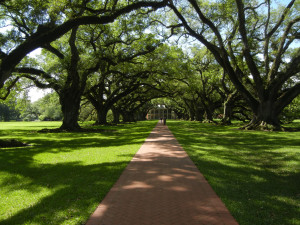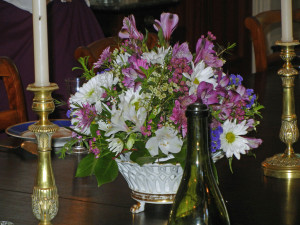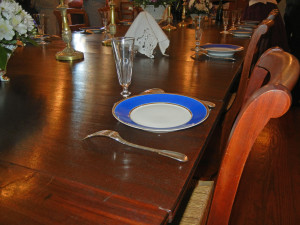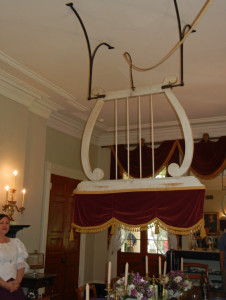I often use black thread to add definition to my quilt designs. Especially on the petals of flowers.
Click any image for a larger view
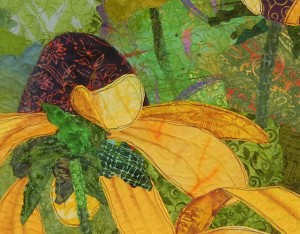
Blessings Underfoot – detail
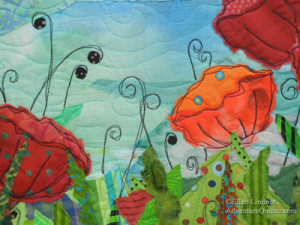
Garden Party – detail
Of course, when I suggest dark thread to my students they’re, understandably, reluctant to try it. So, I’ve developed a way for them to audition the idea. The supplies needed are a plastic page protector and either dry erase or felt tip markers.
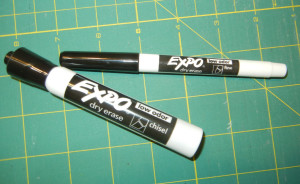
First, test that your marks will come off the page protector. Dry erase markers can be wiped off with a paper towel. Regular markers can be wiped off with a damp towel.
This is the flower needing some definition. It’s supposed to be a snap dragon, but you can see that it doesn’t look quite like that just yet.
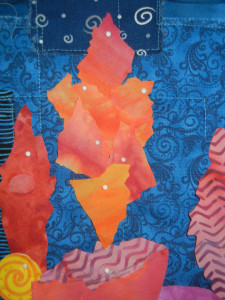
No worries. Pin the page protector over the design area. (Most of these photos were shot at an angle to avoid flash reflection.)
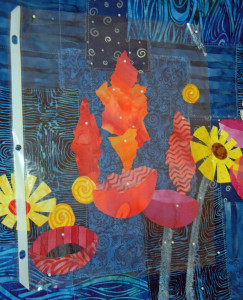
Once the page protector is in place, you can just draw directly on it. In the one below, I just went around the edges of each piece of fabric. (Another bonus of this technique is that you get to plan the stitching path.)
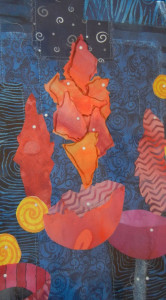
In this next drawing, I’ve drawn a pattern more like my usual mode. There are two changes: I’ve drawn in petals even though there’s not a separate piece of fabric there, and I’ve added a second line, which is something I use a lot. Now it looks a lot like a snap dragon, doesn’t it?
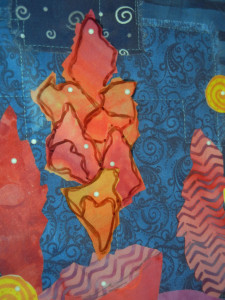
Here’s the same technique at work on a poppy-ish sort of flower. Can you see how much dimension those lines add?
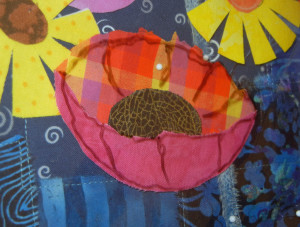
The lines come off very easily.
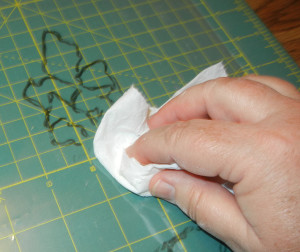
There are, of course, other ways to audition stitching. One is to take a photo, print it out in color, and draw directly on it.
Maybe you’d like to try some dark stitching?
BTW, the flowers shown in this post will be used in the class I’m currently developing. It’s called “Floral Improv” and it will include several ways to make flowers without a pattern, among other things.
Ellen Lindner
P.S. See these other quilts where I’ve used dark stitching:
Rhapsody in Blue Berries
Ti Party
White Poppies (This is a glued collage so the black line is actually drawn on. It serves the same purpose of adding definition.)
